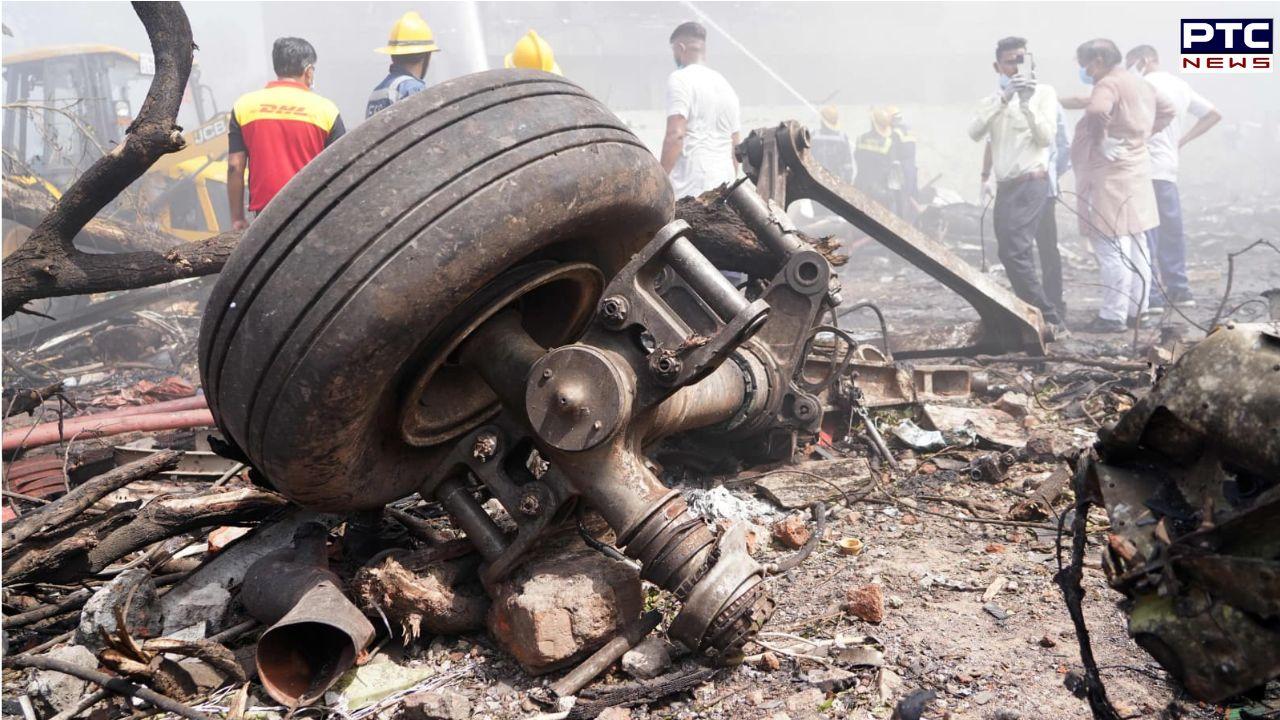

Air India Ahmedabad Crash: Black Box 'damaged', may be sent to US for data recovery
PTC Web Desk: The black box from Air India Flight AI171, which tragically crashed shortly after takeoff from Ahmedabad on June 12, has sustained significant damage and may need to be sent to the United States for data extraction, sources said. The final decision will be made by the Indian government.
The black box, which includes two separate devices — the Cockpit Voice Recorder (CVR) and Flight Data Recorder (FDR) — was recovered nearly 28 hours after the crash. Despite being commonly called a "black box," these devices are actually bright orange for easier identification in debris.
Officials are considering sending the damaged unit to the US-based National Transportation Safety Board (NTSB) in Washington DC for further analysis. If this happens, a team of Indian investigators will accompany the devices to ensure protocols are followed.
Flight AI171, a Boeing 787-8 Dreamliner, was headed to London’s Gatwick Airport when it crashed just moments after takeoff from Sardar Vallabhbhai Patel International Airport. The aircraft plunged into a hostel building in the Meghani Nagar area at around 1.40 pm, igniting a massive fire. Out of the 242 persons onboard, only one passenger, a British-Indian man seated in 11A, survived. The crash also killed 33 civilians on the ground, mainly students residing in the BJ Medical College hostel.
According to the Ministry of Civil Aviation, the flight took off at 1.39 pm. Within seconds, the aircraft reached less than 600 feet before it stalled. Just 36 seconds into the flight, a distress signal was received by Ahmedabad Air Traffic Control. After that, all radio communication ceased, and the aircraft crashed into nearby residential buildings.
Investigators are relying on the CVR and FDR to piece together what happened during those final moments.
The CVR typically captures up to 25 hours of cockpit audio in newer planes. However, the aircraft involved in the crash was delivered in 2014, before a regulation requiring extended recording time. It likely only holds two hours of audio, which may still include crucial cockpit conversations, warnings, and any last-minute decisions or alarms.
The FDR records detailed flight data such as altitude, speed, aircraft direction, vertical acceleration, and system inputs. These details will help reconstruct the flight path and understand the plane’s performance leading up to the crash.
Just two months before the crash, Aviation Minister Ram Mohan Naidu had inaugurated a new Digital Flight Data Recorder and Cockpit Voice Recorder Laboratory at the Aircraft Accident Investigation Bureau (AAIB) headquarters in New Delhi. The advanced facility, built with an investment of Rs 9 crore, was meant to help India analyse black box data without relying on foreign agencies. However, due to the damage sustained in this crash, experts say it may be necessary to send the unit abroad for advanced analysis.
The authorities are now closely analysing both technical and human factors. The CVR may confirm the distress call made by Captain Sumeet Sabharwal and provide insights into communication between him and First Officer Clive Kunder. Their dialogue, response to alarms, and decisions during the final seconds will be vital in determining what caused the crash.
The investigation aims to find out whether the aircraft suffered a mechanical failure, bird strike, or any other emergency. Both the CVR and FDR are essential tools in understanding how and why the tragedy unfolded.
- With inputs from agencies
